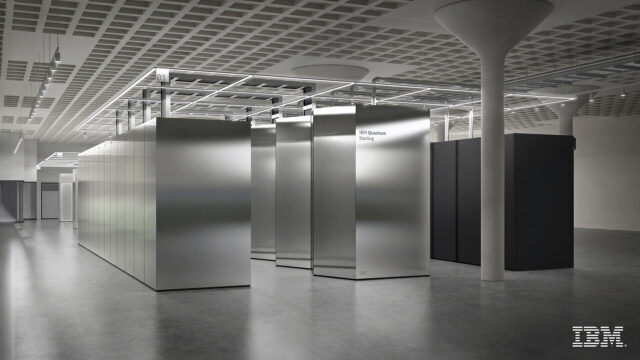IBM and Cisco announce partnership to create a distributed network of fault-tolerant quantum computers

IBM and Cisco have announced plans to work together on a connected network of large-scale, fault-tolerant quantum computers. The collaboration will unite IBM’s progress in quantum hardware with Cisco’s research into quantum networking, creating a system designed to link together multiple advanced quantum machines.
The companies expect this direction to expand quantum computing beyond the limits of individual systems, supported by a planned demonstration of networked quantum computers within five years and further work towards distributed quantum computing in the early 2030s.
SEE ALSO: The future of encryption in a post-quantum world
IBM is continuing its development of fault-tolerant systems, including its Starling-class machine planned for 2029 (you can see a render of that above). Cisco is contributing its quantum networking technologies, including its entanglement chip and supporting components for transferring quantum information across short and long distances. Together, the companies will create a network that treats multiple quantum computers as a unified computing resource.
The partnership includes a proof-of-concept network combining several large-scale quantum computers to run distributed workloads across tens to hundreds of thousands of qubits.
This structure could support algorithms requiring potentially trillions of quantum gates, enabling work on large optimisation tasks and the modelling of complex materials and medicines at scales that exceed the capability of a single system.
“At IBM, our roadmap includes plans to deliver large-scale, fault-tolerant quantum computers before the end of the decade,” Jay Gambetta, Director of IBM Research, said. “By working with Cisco to explore how to link multiple quantum computers like these together into a distributed network, we will pursue how to further scale quantum's computational power. And as we build the future of compute, our vision will push the frontiers of what quantum computers can do within a larger high-performance computing architecture.”
“Getting quantum computing to useful scale is not just about building bigger individual machines, it is also about connecting them together,” Vijoy Pandey, GM/SVP at Outshift by Cisco, added. “IBM is building quantum computers with aggressive roadmaps for scale-up, and we are bringing quantum networking that enables scale-out. Together, we are solving this as a complete system problem, including the hardware to connect quantum computers, the software to run computations across them, and the networking intelligence that makes them work.”
The collaboration will include hardware, software, and new network components. A core requirement is the ability to entangle qubits between machines in separate cryogenic environments. The companies will develop microwave-optical transducers and the software needed to manage entanglement and route quantum information.
Cisco’s proposed data-centre architecture will preserve fragile quantum states, synchronise operations with precision, distribute entanglement resources, and support teleportation between systems. IBM will build a quantum networking unit to convert stationary qubits inside a processor into travelling qubits that can move across a network.
Cisco will distribute entanglement to these networking units through a protocol framework that reconfigures paths as workloads progress. IBM and Cisco will also create a bridge using specialised hardware and open-source software to connect many IBM processors inside a single data centre, with later plans to link multiple sites. This would form the foundation of a wider distributed quantum network suited to large hybrid workloads within a quantum-centric supercomputing environment.
IBM is working with the Superconducting Quantum Materials and Systems Center to study how many networking units can operate within quantum data centres, with a demonstration of multiple linked processors planned within three years.
The long-term direction will support the groundwork for a quantum computing internet, linking quantum computers, sensors, and communication systems over greater distances bythe late 2030s. IBM and Cisco will also plan to co-fund academic research to support development across the quantum computing ecosystem.
What do you think about these plans for a distributed quantum computing network? Let us know in the comments.
Image Credit: IBM
